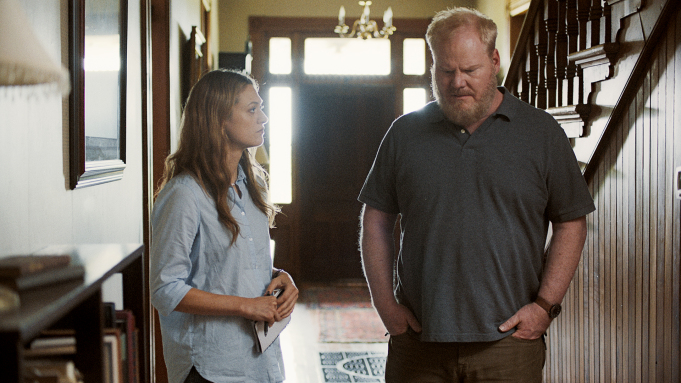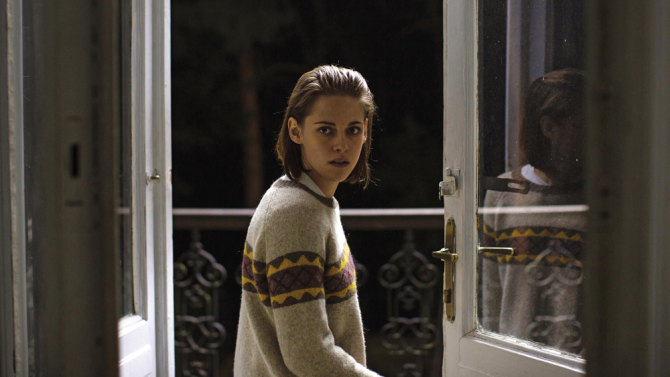
Writer-director Paul Harrill’s indie gem Light from Light ingeniously embeds three portraits of personal awakening into what looks like a familiar haunted house movie.
Single mom Sheila (Marin Ireland) has been a paranormal investigator (a ghost hunter), but she isn’t sure that she even believes in ghosts; she had taken up this pursuit because her most recent ex was a true believer. A clergyman asks for her help with a widower that he is counseling; the man (Jim Gaffigan) has experienced some odd happenings and wonders if his dead wife is haunting the house. And so we think we’re off on a thrill ride of chills and jump scares…
Instead, the phenomena that Light from Light explores are down-to-earth: the impacts of absence and loneliness.
Scarred by one too many failed relationships, Sheila is closed down. She’s working a dead-end job behind a rental car counter, doing her best to raise her sensitive teen son and not doing much else; she has isolated herself in her routine. Her son mirrors his mom – a girl is sweet on him, but he’s afraid to have a relationship with her lest it bring him the heartbreak that his mom has experienced. The widower is both immersed in grief and mulling over something about his wife that complicates his feelings.
The plot is about looking for the ghost, but the movie is really about these three people and whether they can self-liberate from their social paralysis and engage with others.
Light from Light is centered around an astonishing performance by Marin Ireland (Hell or High Water, Sneaky Pete and Tony-nominated for reasons to be pretty). Elisabeth Moss is a producer, and she suggested Marin Ireland for the role of Sheila.
The well-known comedian Jim Gaffigan (who also had a serious supporting turn in Chappaquiddick) has impressive screen-acting chops. The grief of Gaffigan’s character does not look “dramatic”; it’s all the more powerful for being matter of fact. Harrill wrote the part with Jim Gaffigan in mind after listening to him on NPR’s Fresh Air, and learning that Gaffigan had almost lost his wife to cancer and understood facing this loss.
This is the second feature for Harrill. Besides successfully subverting a genre, he makes effective use of a quiet, restrained, spare soundtrack. Set and shot in Knoxville, Tennessee and the Great Smoky Mountains, Light from Light excels in bringing us into a very specific time and place.
Light from Light can be streamed from Amazon and AppleTV.


